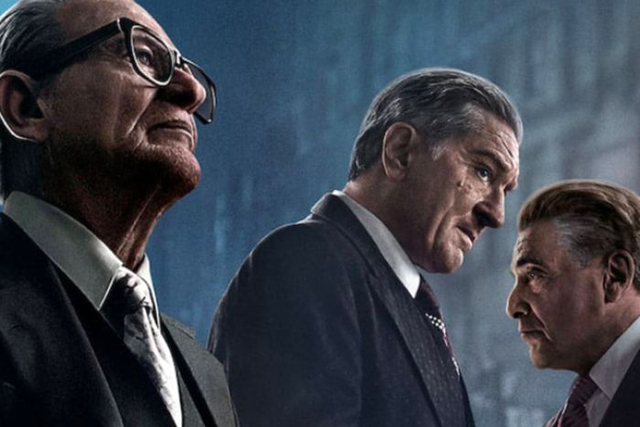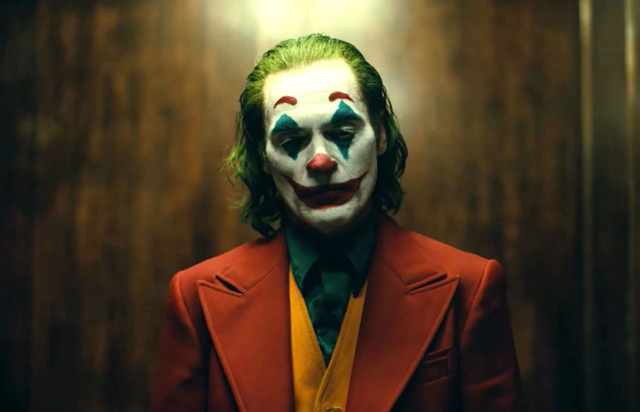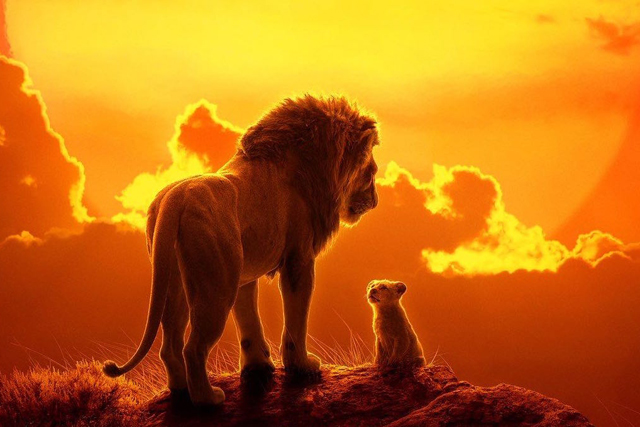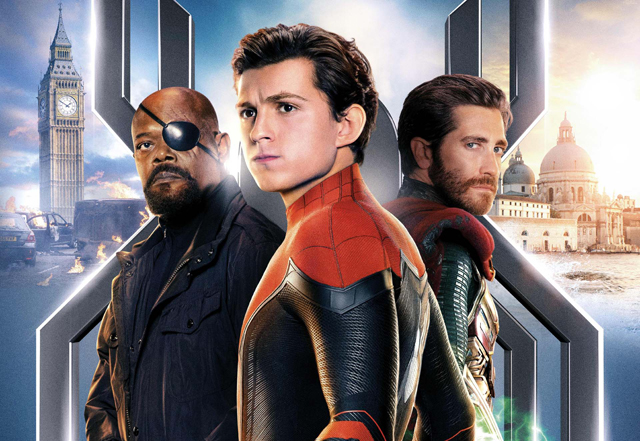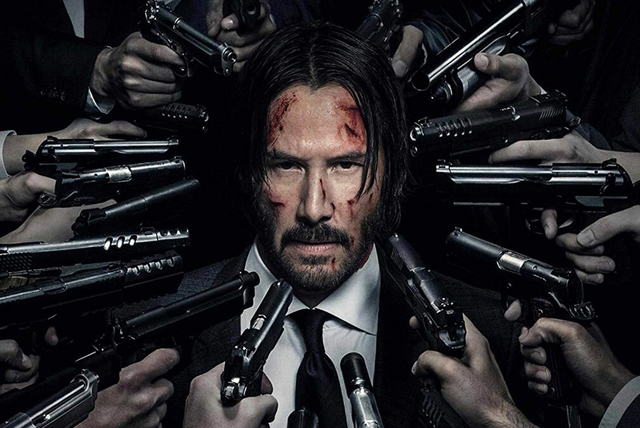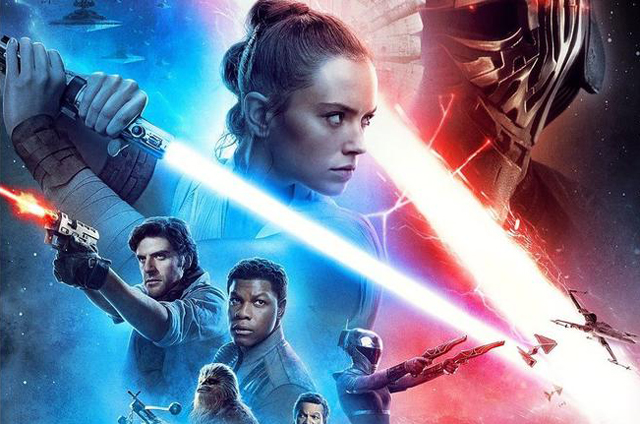
We come to the end of the road now. Back in 1977, when George Lucas was completing his big gamble on a throwback to the old sci-fi serials of his youth, I’m sure that he never thought for once that his film would spark an ongoing story that has lasted over 40 years now. He just wanted to make the kind of movie that he wanted to see on the big screen, and boy did it succeed. I’m sure he had visions of a grander narrative, which he would later draw upon in future films, but if it was his one and only shot, he certainly made the most of it. By the time his original trilogy capper, Return of the Jedi (1983), released into theaters, Lucas had already changed cinema forever. Star Wars was such a monumental thing for the culture that it almost became more than a movie franchise; it became something of a religion. Taking fandom to newer heights than ever before, Star Wars has been almost inescapable in our culture for the last 42 years. And with that high level of fandom, you also have high standards that come with it. George Lucas learned that the hard way when he returned to the franchise with a prequel trilogy at the turn of the century. While the movies do have their defenders, the response to his new trilogy was decidedly negative, and that’s probably because the bar had been set too high by the original trilogy. Though Lucas was still telling the story that he had imagined, audiences were expecting something very different; something more adventurous and less introspective. Despite the mixed results, Lucas was content where he left the story. Cut to 2012 and the shocking news broke that Lucas had sold off the rights to his empire to the Walt Disney Company for a whopping $4 billion. And the even more amazing news came soon after that Disney hadn’t just bought Lucasfilm in order to play stewards to the already existing films. They were going t carry the story even further than Lucas had gone before with a whole new trilogy, plus many more spinoffs.
Thus, we got a new trilogy that extends the story past the original six episodes made by George Lucas. The entire enterprise launched with Star Wars: Episode VII – The Force Awakens in 2015. Under the direction of J.J. Abrams, Awakens hit exactly the right notes for audiences; appealing to that sweet nostalgia spot in every fans heart while at the same time hinting at even bigger things to come. It rode that goodwill to record breaking box office, with a domestic haul that still is unbeaten today; even bigger than worldwide champ Avengers: Endgame (2019). That impressive debut even extended into the following year, carrying the spinoff film Rogue One (2016) to an impressive box office tally. But things went differently with the film that came next. The second film in the trilogy, Star Wars: Episode VIII – The Last Jedi (2017) would turn out to be the most divisive movie in the series since the prequels. Director and Writer Rian Johnson created a Star Wars movie that challenged many tropes and undercut all the expected plot threads that had been set up in the more nostalgia heavy Force Awakens. To some fans, this was a welcome change, because it showed that Disney and Lucasfilm were willing to shake things up in order take Star Wars in a variety of different directions. But, for a lot of fans, they viewed this as a betrayal, and were extremely vocal about their displeasure. The Last Jedi unfortunately exposed a toxic element that existed within the Star Wars fandom, with some people going as far as to harass members of the cast and crew of the film, which caused some of them to leave social media all together. As it stands, Star Wars fandom is at it’s most fracutured point, with people either loving or hating the direction that the series has gone in; with little room in between. That is the environment that Star Wars now finds itself in as it concludes this new, sequel trilogy with what is supposed to be the final chapter in the “Skywalker Saga.” Star Wars: Episode IX – The Rise of Skywalker has a lot of weight on it’s shoulders, having to wrap up this long running series while at the same time dealing with a fan base that is in a broken state. Is it the new hope that can bring balance to the force, or will it only divide the worlds even further apart?
The Rise of Skywalker jumps ahead from the events of The Last Jedi. The rebel alliance is on it’s last legs after their last stand against the First Order. But into the fray comes an even more sinister force. A mysterious message is sent out into the galaxy by the long thought dead Emporer Palpatine (Ian McDiarmid). First Order Supreme Leader Kylo Ren (Adam Driver) who sees Palpatine as a threat to his control of power, hunts down the Emporer’s location. It soon brings him to a hidden home planet of the Sith order named Exogol, where he learns that Palpatine has been quietly building up his forces over the last several decades; creating a Star Destroyer fleet with the same power of a thousand Death Stars. Palpatine extends his assistance to the Ren and the First Order under the single condition, that they bring the girl Rey (Daisy Ridley) to him. Meanwhile, on a new Rebel base, Rey continues her Jedi training under the guidance of General Leia Organa (Carrie Fisher). Despite her best efforts, Rey still struggles to overcome her doubts, and the link between her and Kylo Ren still remains, with him still appealing for her to join the dark side. At the same time, the rebel forces have received information from a spy within the First Order of the deal that has been struck with Palpatine, delivered to them by Poe Dameron (Oscar Isaac) and Finn (John Boyega). With Rey’s help, informed by her readings from the Jedi texts, they learn of a possible way to reach the hidden world of Exogol, using what is called a Sith Wayfinder. Joined by C-3PO (Anthony Daniels) and Chewbacca (Joonas Suotamo), Rey, Poe and Finn take the Millennium Falcon to a variety of new worlds in search of the Wayfinder. Along the way they receive help from new allies, including an old flame of Poe’s, Zorii Bliss (Keri Russell), and the always resourceful Lando Calrissian (Billy Dee Williams). All the while, Ren continues to challenge Rey, pushing her to confront elements of her past that she wishes to forget, especially the ones that make her doubt who she really is. The only question remains, can Rey find the power within herself to comabt Ren’s temptations and face Palpatine head on in order to save the Rebels and the galaxy as a whole?
In many ways, I have to respect the filmmakers and cast for undertaking the enormous burden that this movie must have been. Facing more scrutiny than any other Star Wars production before, this movie not only had to smooth over the rift that was created by The Last Jedi, but it also has to function as both an ending for not just this new trilogy, but the entire nine movie arc that has been dubbed the Skywalker Saga; which by the way extends back 42 years now. That is a lot of pressure no matter who you are. The duties of this undertaking were originally going to go to director Colin Treverrow, who successfully relaunched the Jurassic Park franchise with Jurassic World (2015). However, creative differences led to his removal from the project, which led to J. J. Abrams returning to the directors chair. And it’s that shake-up behind the scenes that more than likely affected the outcome of this film. The Rise of Skywalker could not have been produced at a worse time for Lucasfilm. With The Last Jedi dividing audiences as much as it did, and the spinoff film Solo (2018) underperforming at the box office under that same cloud, it suddenly led to a lot of second guessing at Lucasfilm and parent company Disney. Projects in the pipeline were put on hold, creative teams like Lord & Miller and Benioff & Weiss were let go, and a complete shift in priorities began to take place. And all of that chaos is apparent in the final result of The Rise of Skywalker. It is by far the messiest and least focused film in the new trilogy, which sadly makes it the least effective film as well. I should note though, it’s not a terrible movie; just a disappointing one. For a movie like this to cross into the bad movie territory, it has to completely underwhelm and feel like an insult to the audience’s sensibilities. That’s why I have far more disdain for a movie like the recent Lion King remake, because that movie was purely just a copy and paste effort. With Rise of Skywalker, even though there are a lot of problems with it and plenty of questionable choices, I still see the effort that was put into it by the cast and crew, which at least makes it occasionally work in spite of itself.
So, what exactly is the problem with the movie. Well, it’s clear from the get go that the shuffling around of creative forces behind the scenes led to a story that doesn’t make much sense. With a screenplay by Abrams and Oscar winner Chris Terrio (Argo), the movie almost feels like a course correction after The Last Jedi. And sadly, that heel turn makes the entire trilogy look like it was made without a clear vision. It’s a trilogy at odds with itself, and it unfortunately undermines the narrative arcs that the different characters have been going through. Not only that, but The Rise of Skywalker leaves absolutely no time to settle itself into a cohesive whole. It moves at a break neck speed, fitting in a trilogy’s worth of story into a short 2 1/2 hour runtime. This is unfortunate for a trilogy that up to now was very well paced and character driven. This is one of the rare cases where a longer, three hour run time might have given the movie a better chance. Instead, we get force fed (no pun intended) this story, which feels very un-Star Wars. The most glaring example of this is the way that it introduces Emporer Palpatine into the narrative. There is no mystery shrouding his existence; no explanation given as to how he managed to survive his fate at the end of Return of the Jedi. He’s just there now, and we have to swallow that information immediately. It not only robs any amount of impact his character might have had on the story, but it also undermines the threat that has been built up in the previous two films with Kylo Ren and the First Order. I am also disappointed that the movie almost seems like a dismissal of the story ideas brought forth by The Last Jedi, almost like it’s a concession to all those toxic fans that threw a tantrum because of that last movie. I for one loved the chances that The Last Jedi took, and the fact that Rise of Skywalker just retcons it all, especially with character development, just feels insulting to all of us who passionately defended those changes. There’s no hard lessons learned, no surprising paths take; this movie is just the parent giving the child a toy in order to make them stop crying, no matter how undeserved it is.
Now, despite my issues that I’ve stated above, I didn’t hate Rise of Skywalker; nor did I really dislike it. I would gladly take this film over the prequel trilogy any day, with maybe the exception of the last half of Revenge of the Sith (2005). One thing this movie definitely has over the prequels is that the performances are still top notch. Daisy Ridley in particular owns this movie, giving Rey the right amount of complexity to see her arc through to the end. Though there are some questionable choices made about the direction of her character throughout the movie, Ridley never lets us down in her performance and she greatly helps to carry the movie on her shoulders. I love the fact that she has become a role model to many young fans of Star Wars, and thankfully nothing in this movie will change people’s view of her character. She remains a badass right to the end. The same complexity also is thankfully maintained with Kylo Ren. Adam Driver’s performance may even be the best throughout the entire trilogy, and he thankfully also remains consistent here. Even as his character arc takes some turns, it still is believably reached and that is all thanks to the actor. I selected both Rey and Kylo Ren as two of the best Heroes and Villains in my decade top ten lists here and here, and nothing in this movie diminishes that. Unfortunately, the rest of the cast gets sidelined for most of the movie, including Poe and Finn, who are reduced to tag alongs for Rey. One thing I do give the movie praise for is how well they dealt with closure for Leia. With Carrie Fisher’s all too sudden passing in 2016, the movie was left without a key player in it’s final chapter, as The Last Jedi surprisingly left her alive in the end. Utilizing unused footage of Fisher from The Force Awakens, J.J. Abrams remarkably fits Leia into this story in a way that feels organic and respectful, giving this very important character a graceful sendoff that she absolutely deserves. And even though he is awkwardly shoehorned into this trilogy, Ian McDiarmid does still own every scene he’s in, adequately chewing the scenary as he’s done many times before in this series, going all the way back to Jedi. So, even with the story’s shortcomings, the cast in this film is by no means slouching it in their final go around in this series.
The movie, while not as eye-catching as the beautifully shot The Last Jedi, still has moments of visual splendor. There are plenty of breath-taking shots that still give the movie that epic grandeur that the series is known for. Even something that feels very out of place, like the Sith Temple on Exogol, which has this H. R. Geiger influnence to it, still manages to stick distinctly in your mind. I appreciate the fact that Disney’s Star Wars movies don’t just try to reuse the same planets over and over again, which the prequels did a lot. They really want to show the expanse of the galaxy, and give us new worlds with every film. There are some annoying echoes of the past (seriously, another desert planet), but the movie does go out of it’s way to show you things that you’ve never seen before in a Star Wars movie. Even returning to a familiar location like the Death Star keeps to this philosophy, because here we see the once mighty war machine in complete ruin, decaying against the mighty ocean waves like an astonomically enormous ship wreck. The movie is visually on par with it’s predecessors, but it again is undermined by the lack of focus in the story. Not enough time is ever devoted to fully exploring these places. I should also point out the very important factor of John Williams, who is scoring a Star Wars film for what is likely the very last time. It’s an impressive achievement that the legendary composer was able to score 9 different films over 42 years, helping to maintain a continuity throughout. Though his work here may not be the most memorable of the series, it still feels great to hear new soundscapes still come from the man who gave Star Wars it’s original epic grandiosity. He’s really the main reason why we call Star Wars a space opera, because of the operatic quality of his music. It’s also why even when elements of this movie disappoint on a story level, it makes it hard to say you hate the movie, because there is still a lot to love on a technical standpoint.
This year in particular was going to be a standout one for Star Wars, which is really saying something. Not only did we get the conclusion to this trilogy, but Disney launched it’s largest theme park expansion ever with a new Star Wars based land called Galaxy’s Edge, which despite some naysayers on the internet, has been glowingly received by visitors from across the world. In addtion, Disney lanched their much anticipated streaming platform Disney+, with the Star Wars branded series The Mandalorian as a day one launch title, which has gone on to become an instant hit with fans across the Star Wars spectrum. So, it’s just so disappointing that Rise of Skywalker ends up being so divisive at a time when it looked like the fandom was finally starting to heal and come back together. The Rise of Skywalker is not the worst Star Wars movie ever made, but it certainly is the most problematic. It just seems like the movie was rushed through, without much thought into how it should tie up all the loose ends of the series we’ve been following along with for so long. At the point where Disney and Lucasfilm saw issues beginning to form during the making of this movie, and with their long term plans as a whole, they should have stepped things back and perhaps delay The Rise of Skywalker for maybe a year in order to smooth things out. But, sadly, it was full steam ahead and nothing was going to deter them from that deadline, and it unfortunately made the movie suffer as a result. Though far from the worst Star Wars movie, it is by far the least successful finale to any of the trilogies. Revenge of the Sith fixed many of the problems of it’s predecessors, and though Return of the Jedi was a disappointment in comparsion to A New Hope (1977) and The Empire Strikes Back (1980), it still managed to maintain that high quality level of storytelling; especially in those moments with Luke, Darth Vader and Emperor Palpatine. For The Rise of Skywalker, everything is just a mixed bag. Initially when I left the theater, I came away with some positive feeling. There are certainly moments in the movie that made me genuinely happy. But the further away from it I get, the more the flaws become more apparent. So, my feelings on the movie are not anger or disgust. The movie is not a disaster; just a disappointment. There could have been so much more to this ending than what we got, especially given the enormous legacy behind it. Instead, we get something of a compromise, and that in of itself is a disappointment. Even still, I’m thankful for the journey it took us on, and my hope is that Star Wars leaves this saga behind and truly expands out into the far reaches of the galaxy; perhaps fulfilling its real potential. Sad to see the Skywalker saga end in the way it did, but it was a fun ride nonetheless. May the Force be with it.
Rating: 7/10

